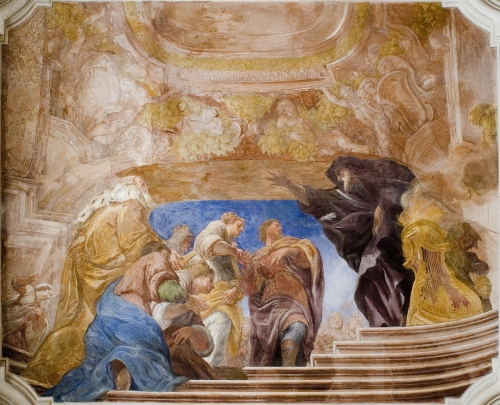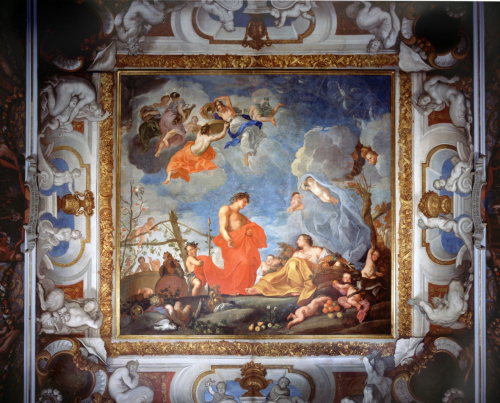Michelangelo Palloni (1637-1711/1713), painter. Born in Tuscany, initially worked in Florence and Rome, and then in Torino, where he executed Passion scenes for the San Lorenzo church.
Brought over to Poland by the Pac family, Palloni decorated, i. a. the Camelodite church in Pożajść near Kowno and painted 87 frescoes with scenes from the lives of the saints and fantastic illustrations of the history of Poland (e.g. members of the Pac family and St. Bruno Boniface), portraying persons in contemporary costumes. The author of frescoes for the church of St. Peter and St. Paul on Antokol near Wilno. In 1684 moved to Warsaw where he decorated the Krasiński Palace for Jan Dobrogost Krasiński and the Open and Closed Galleries in Wilanów Palace for King Jan III Sobieski.
Palloni brought his family over from Italy and settled down in Poland; in 1688 he purchased a house in Warsaw. Commissioned by the Leszczyńskis to paint murals at Rydzyn Castle. In 1692 executed a polychrome in the chapel of St. Kazimierz in Wilno (six large frescoes) and soon after frescoes in the sacristy of the Camelodite church in Bielany near Warsaw as well as an extremely interesting illusionistic decoration on the dome of the chapel of the Missionaries church in Łowicz (c. 1695), where he also embellished the sacristy and the local Piarist church.
At the end of his life Palloni lived in Węgrów, where he painted frescoes in the parish and Reformed Franciscan churches. The characteristic features of his works include expression, a love of illusion and light effects. Married to Maria née Lanzani, fathered one daughter.

